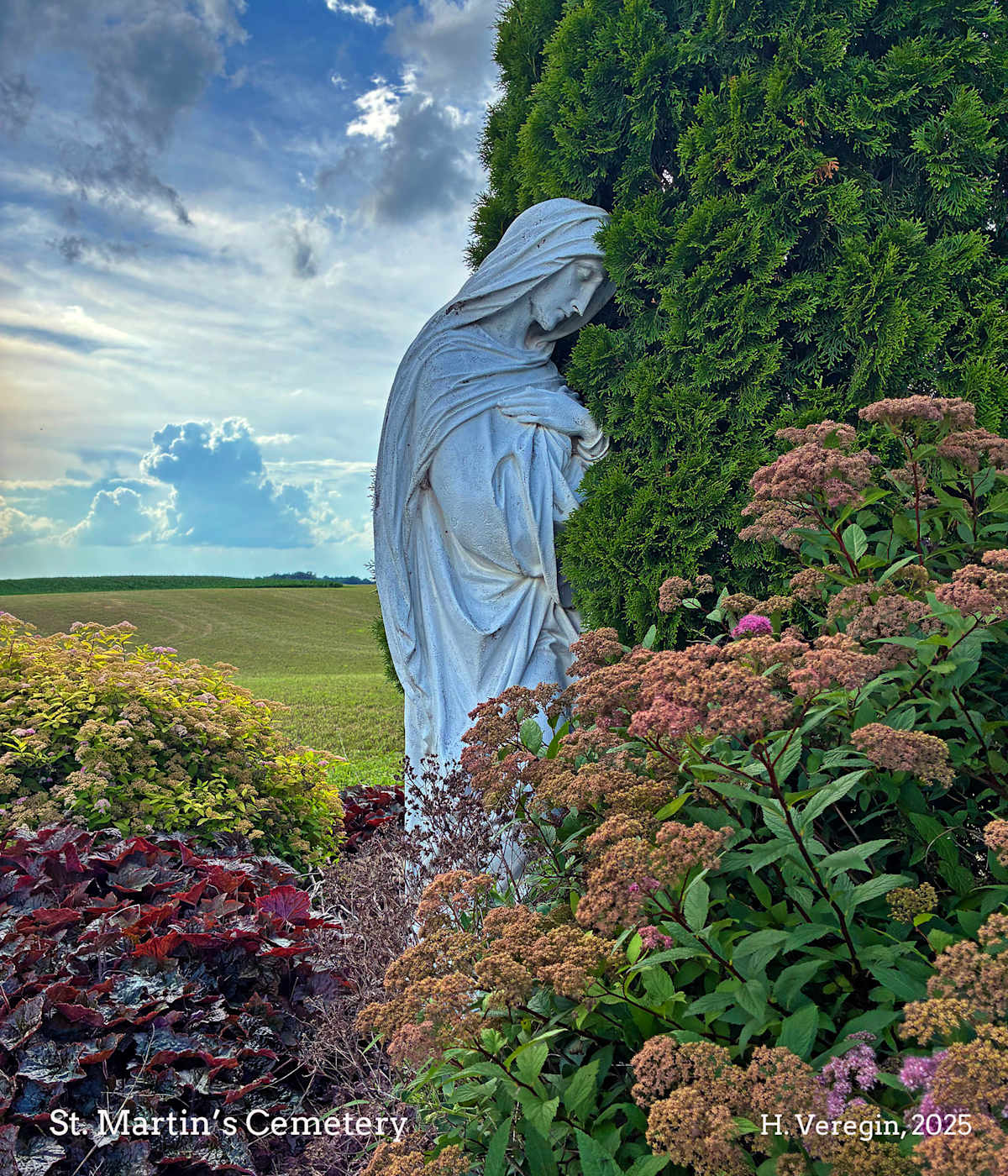All those people, all those lives, where are they now?
- Steven Patrick Morrissey, Cemetry Gates
Wisconsin is a giant boneyard. Cemeteries dot every corner of the state. But because there’s no central registry of cemeteries, no one, not even the Wisconsin Cemetery Board, is sure where they all are or even how many exist. Some cemeteries are maintained by churches, others by cities and villages, and still others by towns. And these are only European cemeteries. Added to this are Native American burial sites, which may be untended or have no indications of burials. [1]
The national repository of place names, called GNIS (Geographic Names Information System), maintained by the US Geological Survey for the Board on Geographic Names, records over 2,700 cemeteries in Wisconsin, but this is not a complete list. Find-a-Grave, a popular website for genealogists, has over 4,800 Wisconsin cemeteries, including examples such as Andrew Finnegan’s Burial Ground in Door County, with only one memorial (and it’s not for Andrew Finnegan).
Southwest Wisconsin, including Richland, Crawford and Lafayette Counties, have more cemeteries per capita (per person) than other parts of the state, based on 2020 census populations and the GNIS cemetery data. Buffalo, Pepin and Jackson Counties also rank high. Perhaps this is due to historic out-migration from these areas, leaving higher numbers of cemeteries from a time when these counties were more populated.
All of this is to say that cemeteries are not especially rare features of the cultural landscape. And yet, each cemetery is unique, telling stories of life and death in a time before advances in medicine and engineering made life a bit less precarious.
St. Martin’s Cemetery in northwest Dane County is a case in point. Located in the unincorporated community of Martinsville in the Town of Springfield, the cemetery is maintained by St. Martin Catholic Church. Many of the stones in St. Martin’s cemetery are in German, since German immigrants settled in this area beginning in the 1850s.
Family names include Theis, Buechner, Statz, Pertzborn and others. Ruhe in Frieden [Rest in Peace] is a common epitaph. Others include Selig Sind Die Todten, Die In Dem Herrn Sterben [Blessed are the dead who die in the Lord] and Ich weiss dass mein erloeser lebt [I know that my Savior is alive].
Personal tragedies are written all over the stones, like this one:
Anna
7 Jan. 1868 – 7 Mar. 1868
Gertrud
2 Jan. 1872 – 20 Oct. 1872
Where does a soul go when it never gets the chance to grow? Does it keep trying? Perhaps Anna tried again as Gertrud, only to meet the same fate. How many chances does one soul get?
But there’s more. On the opposite side of the stone from Anna and Gertrud, two more names are chiseled:
Anna
26 Jan. 1876 – 24 Feb. 1880
Peter
18 July 1878 – 1 Mar. 1880
These two children died within a week of each other.
Two older brothers, Peter (born in 1884) and Pius (born in 1887) both lived into their 60s. Their father (Peter) lived to 64 and their mother (Anna) lived to 87.
We know that life expectancy has increased since the 19th century, but one of the main reasons is a tremendous decline in infant and child mortality. We don’t know why Anna, Gertrud, Anna and Peter died, but death was a common occurrence in children during their brief lives.
As late as 1915, 10 percent of children born in the US did not live to see their first birthday. [2] Diseases like cholera, smallpox, diphtheria, pneumonia, influenza, tuberculosis and enteritis were all potent killers. Today, infant mortality (death occurring in the first year) is less than 1 percent. Modern medicine (e.g., vaccines) and engineering efforts (e.g., clean water) have almost eliminated tragic childhood deaths, although this is not true in all parts of the world, or even everywhere in the US.
Abraham Lincoln’s case is a highly visible example of what families often had to endure. (Lincoln’s links to Wisconsin are many, including his participation in the Black Hawk War as a captain in the Illinois Militia.) Lincoln and his wife, Mary Todd Lincoln, had four boys, Robert, Edward (“Eddie”), William (“Willie”) and Thomas (“Tad”). Only Robert survived to adulthood. Eddie lived almost until age 4, Willie died at age 11 and Tad at age 18. Diagnoses are uncertain, but infectious diseases such as diphtheria, typhoid fever and pneumonia are possible culprits.
Mary Todd Lincoln never recovered from the deaths of her children (and husband) and spent the latter part of her life trying to communicate with them through spiritualists. She was eventually committed to a private sanatorium in Illinois. [3]
It’s not hard to imagine how the trauma of burying three children could lead to irreparable psychological harm. And yet, this refrain was played and replayed across the country, by rich and poor alike. Cemeteries are one of the only things we have to remind us of this period in our history.
Additional Sources:
[1] Laurie Hovell McMillan, Buried Indians: Digging Up the Past in a Midwestern Town, University of Wisconsin Press, 2006.
[2] National Center for Biotechnology Information, Patterns of Childhood Death in America. https://www.ncbi.nlm.nih.gov/books/NBK220806/
[3] National Park Service, The Insanity File. https://www.nps.gov/liho/learn/historyculture/insanity.htm
